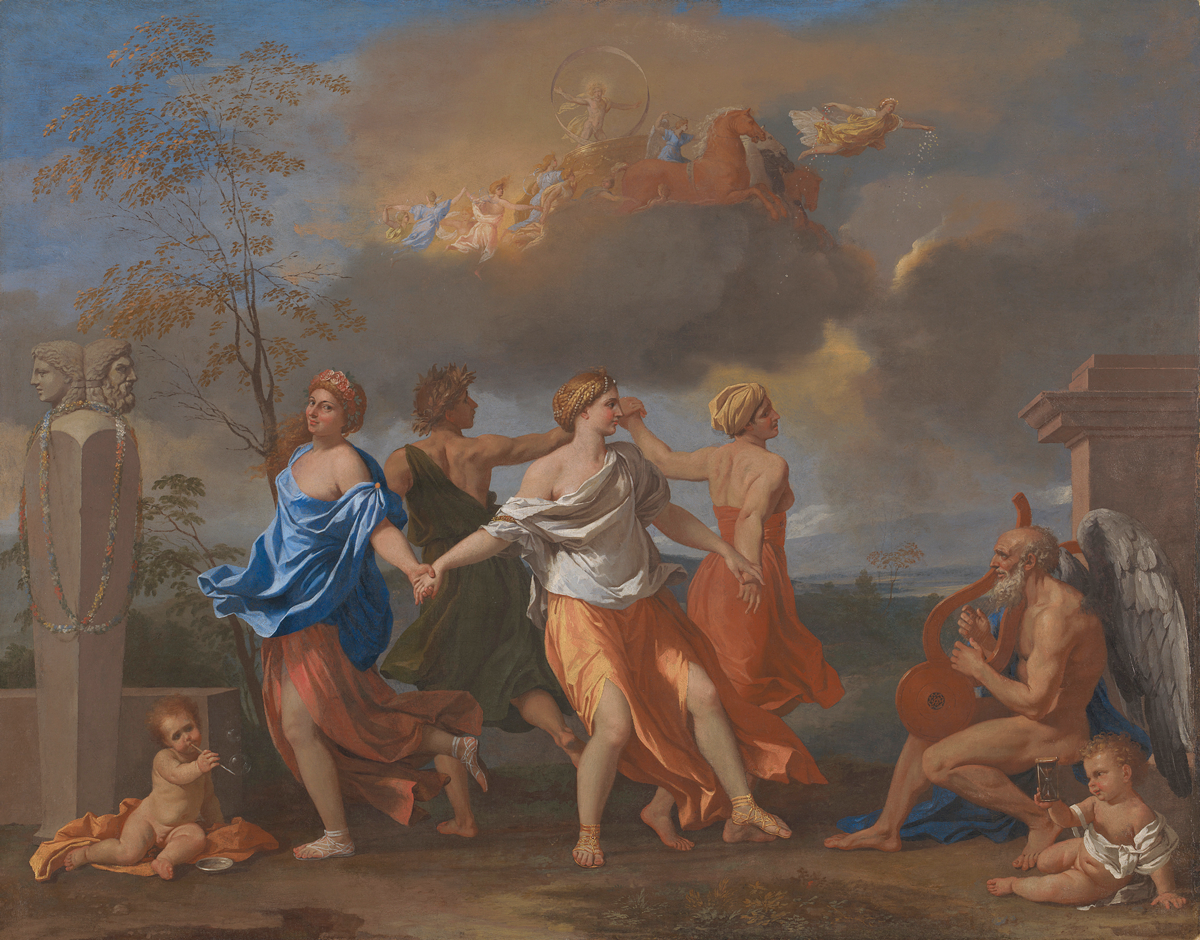
The National Gallery’s latest exhibition examines the importance of the early works of the French artist Nicholas Poussin (1594-1665). There is a visual and chromatic splendour in Poussin’s painting. Based around dance these paintings and drawings established his reputation. The show also explores the influences which shaped and formed this remarkable artist.
In 1624 Poussin moved to Rome where we would live for the rest of his life with the exception of a brief and unhappy period in Paris.
Rome, the seat of the Renaissance, provided the closest encounter with classical antiquity in 17th century Europe. The English painter Sir Joshua Reynolds observed how Poussin’s mind was naturalised in antiquity. Poussin had visited Venice and admired Titian’s work. Although, like Milton, Poussin would move to a more serious manner with a moral preoccupation there is an underlying vibrant Venetian poetry which seems to inform these early pictures. It is in Rome that the Christian and Classical worlds meet and both would inform his art.
Poussin would find an extraordinary vocabulary giving voice to the expressive potential of the human body employing new methods of composition. He would create wax figurines to choreograph the compositions he drew and painted.
Poussin admired the classical reliefs from ancient antiquity depicting dancers. They inform the cool, abstract, formal language of Poussin’s dance pictures which contrasts with the animated scenes which they portray.

The Empire of Flora is an early example of the artist’s dance pictures – Ovidian yet carefree. Flora the goddess of flowers and spring dances with a ring of putti. The mythological scene is played out beneath the sun god Apollo and his chariot. The figures are allegorical representing poverty, wealth and pleasure in a repeated cycle. Human labour, ambition and decadence are played out as the dancers move through the seasons of life and nature.
The exceptional painting A Dance to the Music of Time is set as Dawn scatters flowers in the heavens heralding both a new day and Apollo who is once again depicted with his chariot.
The hues of the dancers’ flowing garments heighten the conflicting sense of stillness and movement. The dancers’ steps are measured responding to the chords of the winged representation of Father Time. This poetic dance is unending. The light and shadows appear real rather than imagined.
Poussin’s patrons were as serious as the artist himself. The literary, musical and choreographic elements of A Dance to the Music and Time are informed by the poet-patron Giulio Rospigliosi (1600-1669), who would later become Pope Clement IX.
This beautiful exhibition offers a fresh perspective on this exceptional classical French Baroque artist and displays the visual and chromatic splendour in Poussin’s dance paintings. Poussin and the Dance runs until the 2nd January 2022. To book your tickets visit www.nationalgallery.org.uk .